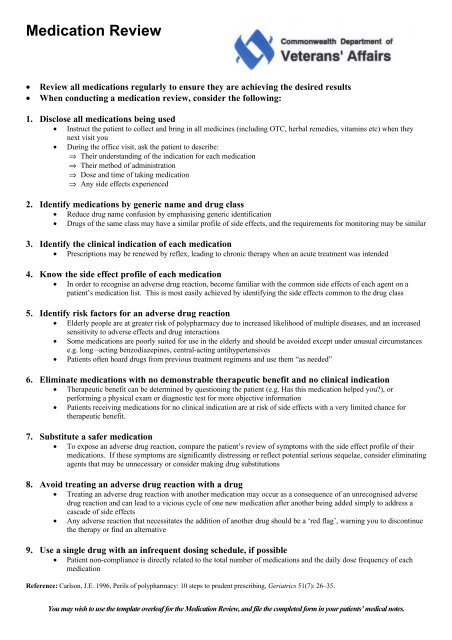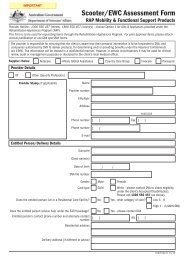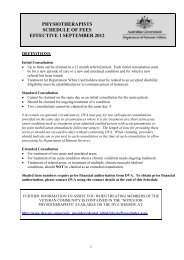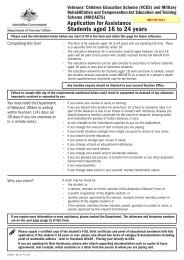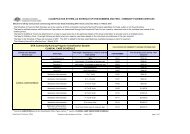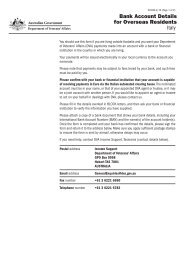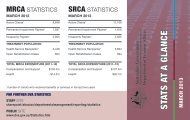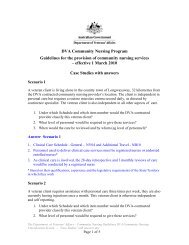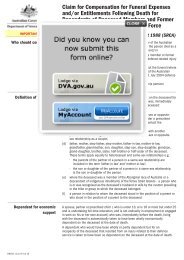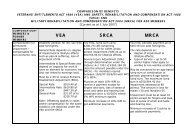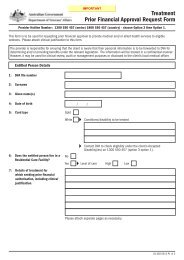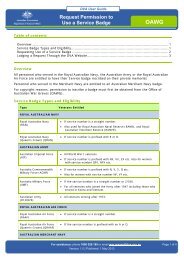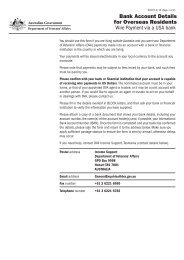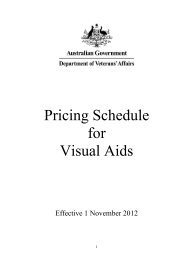Medication review template (PDF 58 kB)
Medication review template (PDF 58 kB)
Medication review template (PDF 58 kB)
You also want an ePaper? Increase the reach of your titles
YUMPU automatically turns print PDFs into web optimized ePapers that Google loves.
<strong>Medication</strong> Review<br />
• Review all medications regularly to ensure they are achieving the desired results<br />
• When conducting a medication <strong>review</strong>, consider the following:<br />
1. Disclose all medications being used<br />
• Instruct the patient to collect and bring in all medicines (including OTC, herbal remedies, vitamins etc) when they<br />
next visit you<br />
• During the office visit, ask the patient to describe:<br />
⇒ Their understanding of the indication for each medication<br />
⇒ Their method of administration<br />
⇒ Dose and time of taking medication<br />
⇒ Any side effects experienced<br />
2. Identify medications by generic name and drug class<br />
• Reduce drug name confusion by emphasising generic identification<br />
• Drugs of the same class may have a similar profile of side effects, and the requirements for monitoring may be similar<br />
3. Identify the clinical indication of each medication<br />
• Prescriptions may be renewed by reflex, leading to chronic therapy when an acute treatment was intended<br />
4. Know the side effect profile of each medication<br />
• In order to recognise an adverse drug reaction, become familiar with the common side effects of each agent on a<br />
patient’s medication list. This is most easily achieved by identifying the side effects common to the drug class<br />
5. Identify risk factors for an adverse drug reaction<br />
• Elderly people are at greater risk of polypharmacy due to increased likelihood of multiple diseases, and an increased<br />
sensitivity to adverse effects and drug interactions<br />
• Some medications are poorly suited for use in the elderly and should be avoided except under unusual circumstances<br />
e.g. long –acting benzodiazepines, central-acting antihypertensives<br />
• Patients often hoard drugs from previous treatment regimens and use them “as needed”<br />
6. Eliminate medications with no demonstrable therapeutic benefit and no clinical indication<br />
• Therapeutic benefit can be determined by questioning the patient (e.g. Has this medication helped you?), or<br />
performing a physical exam or diagnostic test for more objective information<br />
• Patients receiving medications for no clinical indication are at risk of side effects with a very limited chance for<br />
therapeutic benefit.<br />
7. Substitute a safer medication<br />
• To expose an adverse drug reaction, compare the patient’s <strong>review</strong> of symptoms with the side effect profile of their<br />
medications. If these symptoms are significantly distressing or reflect potential serious sequelae, consider eliminating<br />
agents that may be unnecessary or consider making drug substitutions<br />
8. Avoid treating an adverse drug reaction with a drug<br />
• Treating an adverse drug reaction with another medication may occur as a consequence of an unrecognised adverse<br />
drug reaction and can lead to a vicious cycle of one new medication after another being added simply to address a<br />
cascade of side effects<br />
• Any adverse reaction that necessitates the addition of another drug should be a ‘red flag’, warning you to discontinue<br />
the therapy or find an alternative<br />
9. Use a single drug with an infrequent dosing schedule, if possible<br />
• Patient non-compliance is directly related to the total number of medications and the daily dose frequency of each<br />
medication<br />
Reference: Carlson, J.E. 1996, Perils of polypharmacy: 10 steps to prudent prescribing, Geriatrics 51(7): 26–35.<br />
You may wish to use the <strong>template</strong> overleaf for the <strong>Medication</strong> Review, and file the completed form in your patients’ medical notes.
<strong>Medication</strong> Review<br />
Patient Name: ___________________________________<br />
File number: ____________________________________<br />
Date of <strong>review</strong>: __________________________________<br />
<strong>Medication</strong><br />
(including strength &<br />
frequency prescribed)<br />
Actual<br />
dose/frequency<br />
taken by patient<br />
Indication<br />
<strong>Medication</strong> issue<br />
(e.g.none, duplication,<br />
compliance, adverse<br />
event etc)<br />
Action Taken<br />
(e.g. reduce/increase<br />
dose, cease medication,<br />
counsel patient etc)<br />
1<br />
2<br />
3<br />
4<br />
5<br />
6<br />
7<br />
8<br />
9<br />
10<br />
11<br />
12<br />
13<br />
14<br />
15


